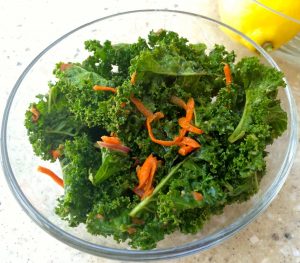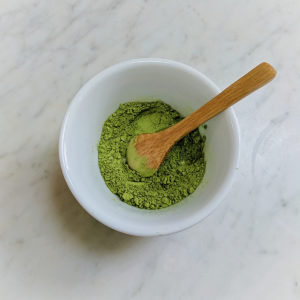In my second installment, I address simple ways to help fight inflammation in the body and reveal a healthier you.
Many major diseases and conditions that plague us have been linked to chronic inflammation, such as heart disease, diabetes, arthritis, depression, and Alzheimer’s. The same goes for autoimmune disorders like rheumatoid arthritis, lupus, multiple sclerosis, psoriasis, Celiac disease, and thyroid disease.
Inflammation is part of the body’s immune response; without it, we can’t heal. But when it’s out of control, it can cause major damage to the body and even the mind.
I believe in a two-pronged approach to fighting inflammation- food and fitness!
Inflammation Fighting Foods
The most powerful tools to combat inflammation do not come from the pharmacy, but rather from the grocery store! Yes – real food!
Not surprisingly, the same foods that contribute to inflammation are generally considered bad for our health. Of course this includes the obvious like sodas and refined carbohydrates, as well as red meat and processed meats.
Unhealthy foods also contribute to weight gain, which is in itself a risk factor for inflammation. In addition to lowering inflammation, a more natural, less processed diet can have noticeable effects on your physical and emotional health. And, although the goal is to optimize health, many people find they also lose weight by following an anti-inflammatory eating pattern.
While it’s helpful to know what foods to avoid, it can quickly lead to negative feelings of restriction. Deprivation is not a sustainable way to live in my opinion. So, let’s focus on big impact foods that are easy to find and add to your diet!
If you are trying to reduce inflammation in your body, incorporating these foods into your day can be powerful!
LEAFY GREENS
Greens like kale and spinach are both high in vitamin K, A, C, calcium and manganese. Kale is high in flavonoids, which provide ample antioxidant benefits, namely anti-inflammatory and even anti-cancer benefits! Dark greens also tend to have higher concentrations of vitamins and minerals, like calcium, iron, and disease-fighting phytochemicals, than those with lighter-colored leaves. Ideally, opt for organic locally grown veggies that are in season and consider eating a fair amount of them raw! Juicing is an excellent way to get more greens into your diet. (Interested in juicing? I’ll delve more into that in my next article!)
CUCUMBERS
These members of the gourd family have an impressive water content of nearly 97 %, which can help relieve fluid retention. Cucumber phytonutrients play a key role in providing antioxidant and anti-inflammatory benefits, supporting overall health alongside conventional antioxidant nutrients (including vitamin C, beta-carotene, and manganese) of which cucumbers are an important source.
GINGER ROOT
Most well known as a digestive-aid, this spicy little root is also a powerhouse anti-inflammatory. The properties of ginger are thought to provide pain relief in a number of ways, from halting migraines to easing the aches of arthritis and other joint pain.
TUMERIC
No one can argue that turmeric packs a lot of punch and is a powerful inflammation fighter. And as an added bonus, turmeric has been shown to support memory and ligament health. You can get curcumin in supplement form, but it can also be easily incorporated into your diet. Try adding it to your soups, salad dressings, and/or smoothies!
OMEGA-3 FATTY ACIDS
Experiments in animals and humans have shown omega-3s demonstrate potent anti-inflammatory properties and might be useful when it comes to chronic inflammation and autoimmune disease. If you are vegan, (or just don’t like fish) flaxseed oil is a great alternative.
GREEN TEA OR EVEN BETTER – MATCHA TEA
Matcha is the most nutrient-rich green tea and comes in the form of a stone-ground unfermented powder. The best Matcha comes from Japan and has up to 17 times the antioxidants of wild blueberries, and seven times more than dark chocolate! Tulsi is another tea loaded with anti-inflammatory antioxidants and other micronutrients that support immune function and heart health.
And this list really does continue! There are so many amazing and natural ways to combat chronic inflammation in the body. These are just a few of the basics to get you started.
Fighting Inflammation with Physical Activity
Aside from shifting the foods you consume, you need to start to shift your body also- literally. Consistent exercise or physical activity is one of the best ways to keep inflammation at bay. The best part? It doesn’t matter how you move – just get out and go!
Both aerobic and nonaerobic exercise have been shown to lower levels of C-reactive protein, or CRP (the body’s marker for inflammation). The lower the body’s CRP, the less inflammation is present. Activities that calm the mind, such as meditation, guided imagery, and breath work, lower CRP levels. Better yet, try combining a meditative focus with physical movement in a practice like yoga!
I believe that when you identify the underlying sources of inflammation, you can heal the body. These might include stress, hidden infections, food allergies or sensitivities, toxic exposure, genetic predisposition, nutrient deficiencies, and leaky gut. Finding and eliminating the root cause of chronic inflammation requires detective work, trial and error, and patience; but, the results are worth it!
If you have any questions, please feel free to ask in the comments section or send a message.
Amy is a private nutrition counselor with a master’s degree in Nutrition and Health Sciences, and also teaches Juicing workshops. She is certified by the World Paddling Association as an instructor, a Paddle Into Fitness Ambassador and paddle board yoga instructor and is considered among the leading experts within her field.







